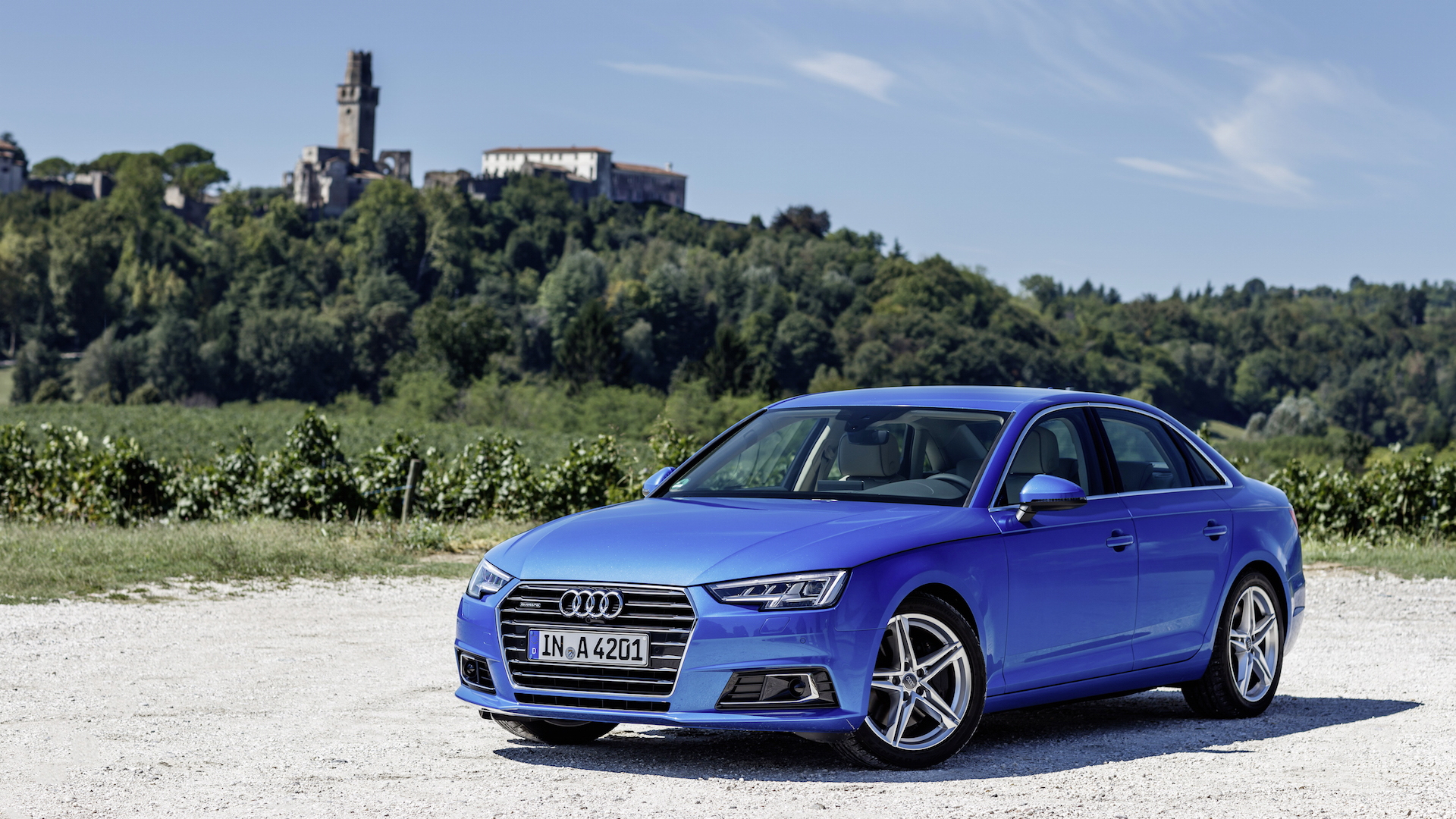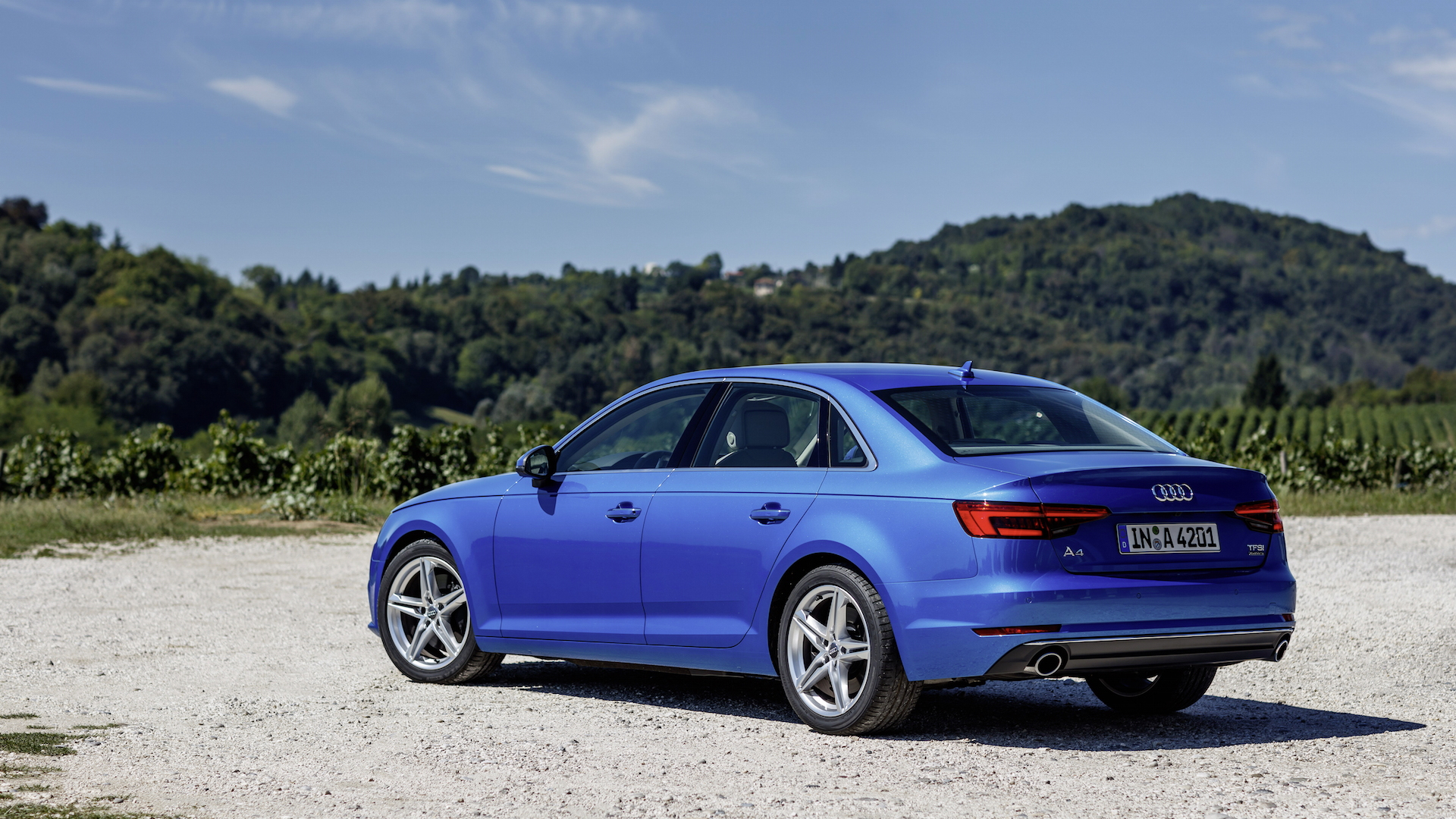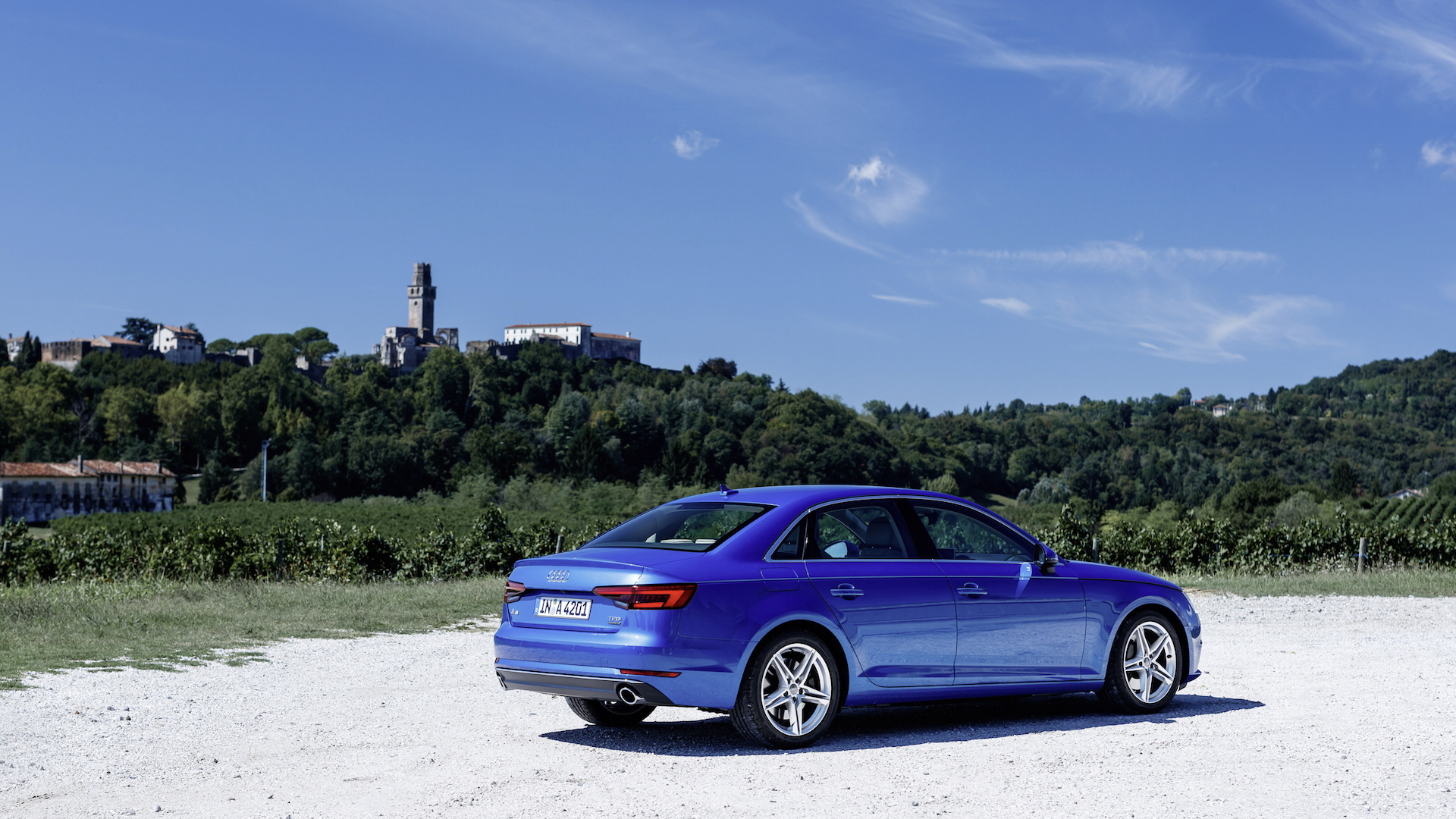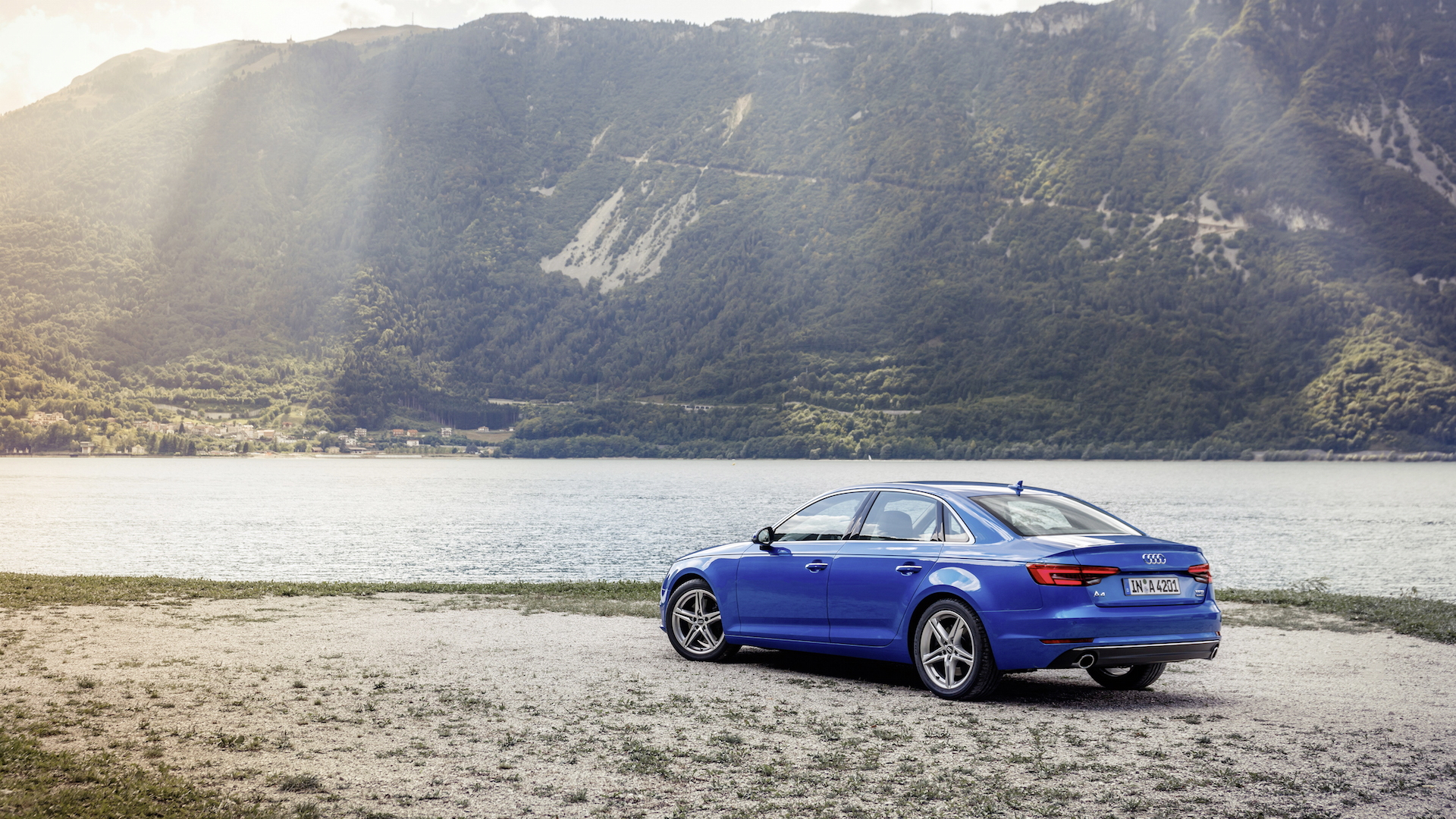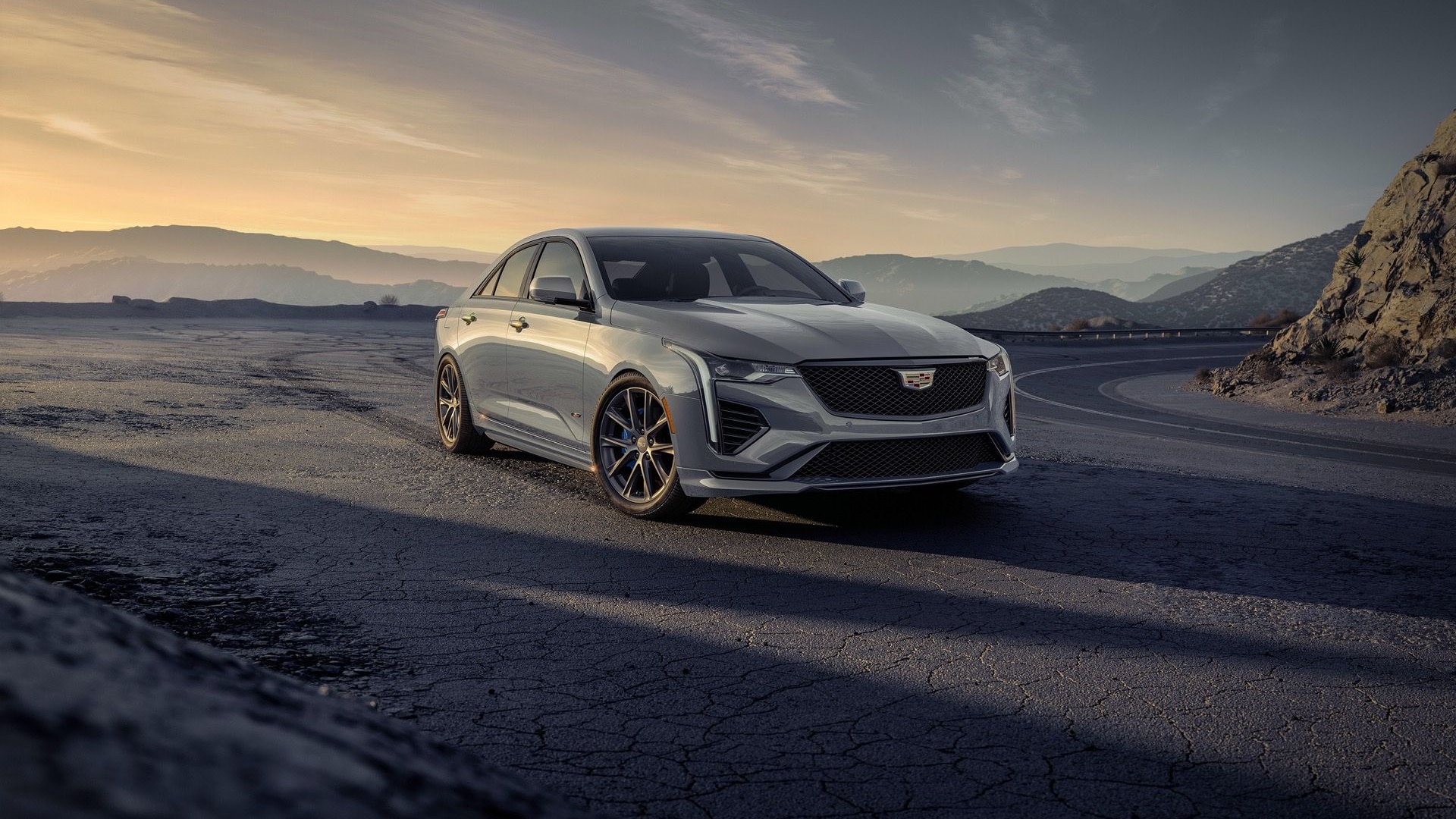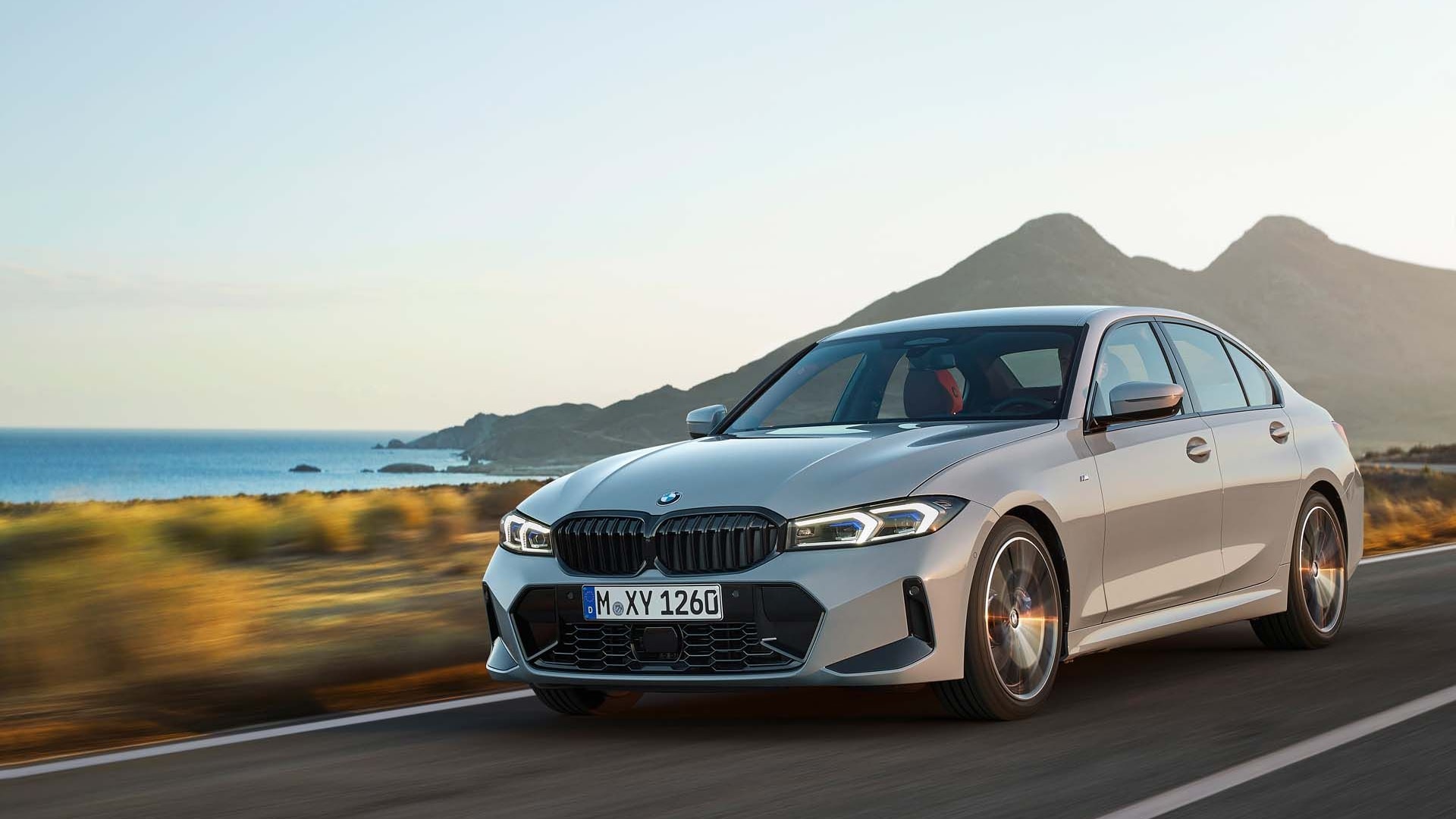The arrival of an all-new Audi A4 is no small occasion. It's the profit powerhouse, the "center of gravity" for Audi of America, as product manager Filip Brabec puts it. Cars like the A4 represent the biggest slice of the luxury-car market in the U.S., and the most competitive.
The lineup in the compact to mid-size class practically oozes credibility, aggregating everything from the perennial best-selling BMW 3-Series and Mercedes-Benz C-Class, to the arrivistes, the Cadillac ATS and Infiniti Q50, not to mention the Jaguar XE and Alfa Romeo Giulia waiting in the wings.
MUST SEE: Hear The Bugatti Vision GT Concept’s Engine Start Up And Rev: Video
To stay in that "perennial" class, and to push higher a run of 12 million A4s sold worldwide, the ninth-generation ("B9") A4 has to stretch in new and more inventive ways. It does so, but not in the obvious directions.
The new A4 is arguably less distinctive to look at than previous models. Its aero-clean shape draws on elements from its recent concept cars and the 2017 Q7 SUV, but the brightest touches have been toned down. There are more sharply creased lines at the grille, which juts out just below its four-ring emblem, for a three-dimensional effect. Elsewhere, the A4 looks very much like the current model--with lots of front-end overhang, a bullet-smooth front end, and relatively large glass areas. On the new car, the decklid sits higher, as does the nose; the rear quarter view is its best, where the appealingly curved fenders and tumblehome (the inward curve of the cabin toward the roofline). It's a handsome car, but the proportions and details may have reached their ultimate iteration here.
Inside the cabin, there's a spare look that has the effect--intended or not--of fondly recalling the pre-A4 era. There's a horizontal theme that suggests the Audi 4000's spartan looks: it brings the cowl lower and opens up the field of vision over the dash. The stitching that runs down the seats is a subtle nod to a classic German pattern from the Eighties, too.
Audi's forte in the past generation of cars has been in interior detailing, and the new A4 is more composed and better-integrated than the prior car. The steering-wheel hub is smaller, but the Audi ringed logo is larger, leaving more room for thumb controls on the dished spokes. A strip of vents divides the dash horizontally, but the wide middle swath is there for continuity--it's not a functioning air vent. A big TFT screen is fixed on the dash, a little more deeply integrated than before. And on our test car, a rich-looking open-pore wood was paired with caramel-colored seats and a black cloth headliner--it's a handsome combination that Audi does particularly well.
CHECK OUT: 2016 Audi TT Video Road Test
One way the A4 stretches inventively is in the driving controls. The A4 adopts a "virtual cockpit" like the TT coupe and convertible. It's a wide TFT screen that replaces conventional gauges on upper-trim levels, while base cars sport conventional gauges and a 5-inch display screen. When fitted, the virtual cockpit can toggle through a series of screens showing large gauges, a wider array of information from the infotainment system, or a full-screen display of navigation, including a Google Earth-generated map view. That display's limited by the form factor of the screen--navigation wants a portrait-style layout, and the screen's of the landscape variety--but it's attractive, quick to refresh, if a little distracting through the learning curve.
Elsewhere, there's also a new set of toggles for climate controls with their own fluid graphics: flick the switch for the fan speed and its icon grows in size on the LCD panel through the modern magic of capacitive switches. They're no better or worse for legibility that other digital readouts, and the toggles do a fine job of replacing the tactile rightness of a big, round knob.

2017 Audi A4

2017 Audi A4

2017 Audi A4

2017 Audi A4
Performance
Careful styling changes meet more meaningful changes to the A4's running gear. Two new turbocharged four-cylinders are set to go on sale in the U.S. when the A4 launches early next year, and with them comes a new seven-speed dual-clutch transmission and a choice of front- or all-wheel drive.
On the just-announced S4 sport sedan, there's a turbocharged V-6 coupled to an eight-speed automatic transmission.
The version you'll find in showrooms at launch will be a 2.0-liter, turbocharged, gasoline-powered four-cylinder, offered in either front- or all-wheel drive. It's rated at 249 horsepower (adjusted and rounded up from the 252 hp PS figure quoted in early previews) and 272 pound-feet of torque. It's a new design, and comes in a variety of output levels for different markets. The American-spec version is the strongest, and compared with the outgoing engine, it's 29 hp and 14 lb-ft stronger. It's paired at launch with the dual-clutch, though there's every indication a six-speed manual transmission will eventually make its way into some A4 variant.
The new turbo four feels like a natural complement to the A4's size and weight--down about a hundred pounds from the prior car. The engine sounds balanced and smooth, and it's a natural note--there's no active noise cancellation in the A4, unlike some rivals, just selective sound deadening applied to wheel housings and the firewall. Combined with the added gear of the dual-clutch, the turbo four can launch with gusto, seems to have better shift quality in urban cycles where dual-clutches typically can feel less smooth, and rifles quickly through paddle-controlled shifts. Audi estimates this combination will accelerate from 0-60 mph in 5.6 seconds.
There's also a 2.0-liter turbodiesel four-cylinder in the A4 plan--but the discovery and admission that Volkswagen has tried to defeat emissions controls on its smaller-displacement turbodiesels in the U.S. has put the A4's diesel into doubt, at least until Volkswagen AG determines how to handle the massive and likely protracted legal battle over past and future American-market diesels. (Read the latest on the EPA and VW diesels at Green Car Reports.)
The A4's steering, suspension, and brakes have been redesigned, but the lighter-weight, five-link front and rear setups are similar to those in the outgoing car. Electric power steering incorporates a new mode that steps up boost at lower speeds and higher steering angles--better for parking and city driving. And Audi's Drive Select system returns, this time with the ability to cycle from economy to sport-plus modes to adopt new profiles for the steering, throttle progression, transmission shift speed and quality, and ride quality delivered by adaptive air dampers when specified. In the U.S. the most expensive A4s will come with the air dampers, and they'll be an option on middle trim levels. Four-piston, fixed-caliper front brakes and two-piston rear brakes are standard.
Unfortunately our time in the A4 with a U.S.-spec drivetrain was quite limited, and the car we drove came with the adaptive dampers and wore 19-inch Ventis summer tires, while U.S.-spec cars will ride on all-season treads. In general terms, the A4 seems at least as responsive and composed as last year's mid-line cars, but we'll have to reserve comments on ride and handling until we've cycled through the range of configurations--from standard tires and suspension, through the S-line's more sporty treads and wheels.
The A4 delivers on better interior room and comfort for all passengers. It's moved to a new architecture--Volkswagen's MLB, which will underpin a new family of vehicles from the A4 to the new Q7, to the next generation of A6 and A7.
Audi and its parent company, VW AG, have built this component kit with stronger body sections and more flexible packaging in mind, while trying to keep a check on curb weight. Initial specs show they've succeeded: the new A4 is an inch longer than the last version, with 0.7 inches more between the wheels. It's also a half-inch wider. In all, though it's grown to near the size of the old Audi 100/200 sedans, it is said to weigh less than the prior A4--between 70 to 100 pounds less, depending on drivetrain configuration, even with added standard equipment.
Interior specs are better in most dimensions, and in the real world, the A4 feels more spacious, too. Audi claims gains of an inch in headroom and 2.6 inches in front shoulder room, and says it has the longest cabin in the class. In the vehicles we drove, the impression of space was very good, coupled with better shaping and contouring to the sport seats.
It's even better in the back seat, one place where the previous A4 fell down against rivals. The last car had a low, short cushion that helped its headroom figures; the new one has excellent back-seat space, with a higher and longer bottom cushion for better comfort. Six-footers can sit behind six-footers with a touch of knee room to spare.
Storage gains are marked, too. The A4 has big cupholders sitting ahead of its shift lever, and a more usefully shaped center console bin. There's a secret and probably unauthorized bin where the fuse panel should be--down and to the left of the steering wheel, it's big enough to accept a couple of water bottles. The vast trunk holds two roll-aboards and two backpacks easily, without stacking anything, and it's a squared-off, regularly shaped space too, with covered hinges.
As usual, Audi's precisely designed interiors reflect a lot of attention to seams and panel fits. I'm no fan of display screens that don't tuck into the dash, but the A4's TFT display looks more firmly affixed. Wind noise is low thanks to low drag, and though the A4's cockpit doesn't land the visual knockout of the new Mercedes C-Class, the refined and restrained trim combinations I saw were uniformly handsome and tasteful.

2017 Audi A4

2017 Audi A4

2017 Audi A4

2017 Audi A4
Safety and tech
Audi's putting a big emphasis on the A4's next-generation infotainment and connectivity features. The virtual cockpit aside, the A4 now has standard smartphone connectivity. It also has a new version of the Multi-Media Interface (MMI) that factors in a roller-controller with a scratchpad surface for handwritten input; LTE data connectivity; and either a seven-inch or an 8.3-inch display screen on the dash. The resolution on the larger screen is breathtaking--no more output from the standard rearview camera that looks like the lens is covered in mud.
The A4 also gets the latest driver assistance systems, everything from forward-collision warnings with automatic braking, to adaptive cruise control, blind-spot monitors with cross-traffic assist, lane-departure warnings and lane-keeping assist, automatic parking assist and attention assist. The adaptive cruise has traffic-jam assist, a stop-and-go function that can follow cars in the lane ahead at speeds of up to 40 mph. As we've experimented with these systems, we've found it's possible to drive long distances with all the lane-assist features engaged, and drive in a proto-autonomous mode.
New functions include a lane-turn assist, which signals a warning if you're about to steer the A4 left or right into oncoming traffic; and exit assist, which scans the lanes behind the front doors and sounds a warning if the doors open into busy traffic. Audi's connected services also add on a smart-watch app interface, and all A4s will come with a limited set of smartphone-app features including remote lock and car status checks.
Any first drive of a European vehicle has to circle around the features we won't get in the U.S. The list here is relatively short--aside from smaller gas and diesel engines and summer tires, we won't be getting the Avant wagon (an Allroad successor is all but certain, instead), and for now, a manual transmission.
The U.S. lineup should include Audi's usual Premium, Premium Plus, and Prestige trim levels, with all cars coming standard with power features, leather upholstery, Bluetooth, and smartphone connectivity. Major options will include all-wheel drive, an S-line appearance package, the adaptive air suspension, full LED headlights, and a stunning Bang & Olufsen 3D audio system with 19 speakers and 755 watts of output.
The new A4 arrives just as its sport-sedan niche is exploding with exceptional new nameplates--many of them lacking the broad appeal of today's Audi emblem. It's extraordinarily competitive, and the new Mercedes C-Class in particular has eclipsed some of the newer arrivals with its standard air suspension and turbocharged engines, not to mention one of the most attractive interiors of any vehicle.
The A4 has made progress for sure, but before we proclaim just how much, we want more seat time to get a better read on its road manners.
The A4 goes on sale after the first of the year. Pricing hasn't been detailed, but a modest increase over today's figures is expected.
_______________________________________
